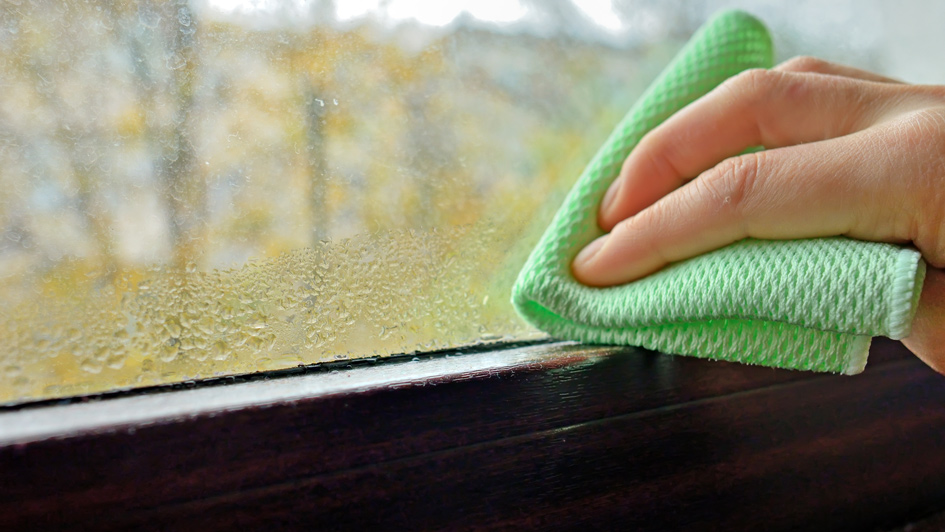
The windows of your home open up to the outdoors, a way to let light in as you enjoy the view of your garden, yard or landscape. The last thing you want to see is a sweaty window covered in a layer of condensation.
Not only are windows covered in condensation unsightly, they also can be a sign of a more serious air-quality deficit in your home. Thankfully, there’s several things you can do to correct the problem.
What Causes Sweating along Windows
Condensation on the interior of windows is formed by the damp warm air inside your home hitting the cold surface of your windows. It’s especially common around the winter when it’s much colder outside than it is within your home.
Inside Moisture vs. In Between Panes
When dealing with condensation, it’s necessary to understand the distinction between moisture on the inside of your windows compared to moisture in between the windowpanes. One is an indoor air quality issue and the other is a window issue.
- Moisture inside a window is produced from the warm humid air in your home collecting on the glass.
- Existing moisture you find between windowpanes is caused when the window seal fails and moisture gets in between the two panes of glass, and by then the window should be repaired or replaced.
- Condensation in the windows isn’t a window issue and can instead be resolved by adjusting the humidity inside your home. Many things generate humidity in a home, such as showers, cooking, bathing or even breathing.
Why Indoor Sweating on Windows Could Mean a Problem
Although you might consider condensation inside your windows is a cosmetic problem, it can be a sign your home has higher humidity. If this is in fact the case, water might also be condensing on window frames, cold walls or other surfaces. Even a small film of water can cause wood surfaces to mildew or rot over time, increasing the growth of mildew or mold.
How to Lower Humidity in Your Home
Fortunately there are several options for removing moisture from the air throughout your home.
If you have a humidifier running within your home – whether it be a small-scale unit or a whole-house humidifier – lower it further so the humidity inside your home decreases.
If you don’t have a humidifier active and your home’s humidity level is higher than you prefer, consider getting a dehumidifier. While humidifiers put moisture in your home so the air doesn’t get too dry, a dehumidifier extracts excess moisture out of the air.
Smaller, portable dehumidifiers can eliminate the water from one room. However, those units require emptying water trays and generally service a small area. A whole-house dehumidifier will extract moisture from your entire home.
Whole-house dehumidifier systems are controlled by a humidistat, which allows you to specify a humidity level the same like you would pick a temperature with your thermostat. The unit will start immediately when the humidity level overtakes the set level. These systems work with your home’s HVAC system, so you will want to contact qualified professionals for whole-house dehumidifier installation Haines City.
Other Ways to Reduce Condensation on Windows
- Exhaust fans. Installing exhaust fans around humidity hotspots including the bathroom, laundry room or above the kitchen range can help by drawing the warm, moist air from these rooms out of your home before it can elevate the humidity level in your home.
- Ceiling fans. Running ceiling fans can also keep air swirling throughout the home so humid air doesn’t get stuck in one spot.
- Opening up window treatments. Throwing open the blinds or drapes can decrease condensation by preventing the damp air from being trapped against the windowpane.
By decreasing humidity across your home and dispersing air throughout your home, you can make the most of clear, moisture-free windows even in the winter.
